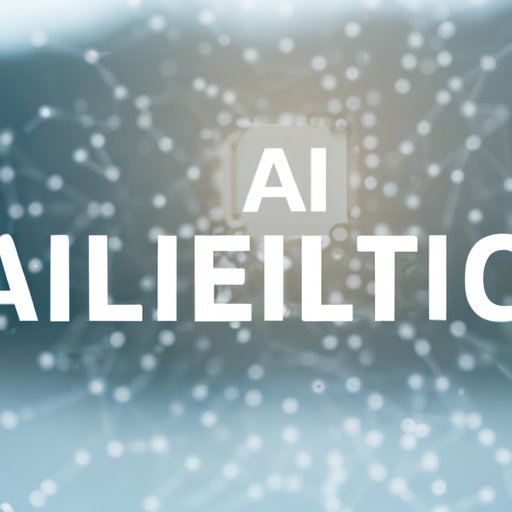Introduction
Artificial Intelligence (AI) is a rapidly growing field that has been used in many industries in recent years. AI refers to the ability of machines to perform tasks that would normally require human intelligence. AI technologies have made it possible for machines to learn from data, recognize patterns, and make decisions without being explicitly programmed. With its vast potential, AI is quickly becoming an essential part of many businesses and organizations.
Developing AI involves a variety of steps that need to be taken in order to create an effective AI system. These steps include defining goals and requirements, choosing the right platform, designing algorithms, training the AI model, testing and deployment. There are also different types of AI and their respective pros and cons that must be considered when developing AI. Additionally, there are important considerations such as data quality, model validation and security that should be taken into account.
Steps for Developing AI
The first step in developing AI is to define the goals and requirements for the project. This includes identifying the tasks that the AI system will be expected to accomplish, as well as any constraints or limitations that may exist. Once the goals and requirements have been established, the next step is to choose the right platform for the project. This could involve selecting a specific programming language, framework or library that can be used to develop the AI system.
The third step is to design algorithms that can be used to achieve the desired results. Algorithms are sets of instructions that can be used to solve problems. They can range from simple rules-based systems to more complex machine learning algorithms. Depending on the complexity of the problem, different algorithms may need to be designed.
Once the algorithms have been designed, the next step is to train the AI model. This involves providing the model with data and allowing it to learn from it. The model will then use this data to identify patterns and make predictions. Depending on the complexity of the task, this process may take some time.
After the model has been trained, the next step is to test the AI system to ensure that it is working correctly. This involves running simulations and using real-world data to evaluate the accuracy and performance of the model. Finally, the system can be deployed in a production environment where it can be used by end users.

Different Types of AI and Their Pros and Cons
There are several different types of AI that can be used for different applications. The most common types of AI include machine learning, natural language processing (NLP) and computer vision.
Machine Learning
Machine learning is a type of AI that enables machines to learn from data. It involves training algorithms to identify patterns and make predictions based on those patterns. Machine learning algorithms can be used for a wide range of applications, such as image recognition, natural language processing and autonomous vehicles. The main benefit of machine learning is its ability to quickly process large amounts of data and make accurate predictions.
Natural Language Processing
Natural language processing (NLP) is a type of AI that enables machines to understand and generate natural language. It can be used for applications such as voice recognition, text analysis and language translation. The main benefit of NLP is its ability to accurately interpret natural language and generate useful outputs.
Computer Vision
Computer vision is a type of AI that enables machines to understand images and videos. It can be used for applications such as object detection, facial recognition and image classification. The main benefit of computer vision is its ability to accurately identify objects in images and videos.
Important Considerations When Developing AI
When developing AI, there are several important considerations that should be taken into account. The first consideration is data quality. AI systems require high-quality data in order to make accurate predictions. This means that the data must be clean, accurate and up-to-date in order for the AI system to work properly.
The second consideration is model validation. This involves testing the AI system to ensure that it is performing as expected. This includes evaluating the accuracy and performance of the model, as well as ensuring that it is not overfitting or underfitting the data. This is an important step in ensuring that the AI system is reliable and can be trusted.
The third consideration is security. AI systems are vulnerable to attacks, so it is important to ensure that they are secure. This includes protecting the data used to train the model, as well as ensuring that the system itself is secure from malicious actors. Security measures should be taken throughout the entire development process.

Examples of Existing AI Projects
There are many examples of AI projects that have been developed in recent years. One example is autonomous vehicles, which use AI to navigate roads without human intervention. Another example is healthcare, where AI is being used to diagnose diseases and recommend treatments. Finally, AI is being used in smart home applications to automate tasks such as controlling lighting and temperature.
Future of AI Development
The future of AI development is very promising. According to research conducted by McKinsey & Company, “AI has the potential to deliver additional global economic activity of around $13 trillion by 2030.” This could lead to increased productivity, improved decision-making, and better customer experiences.
However, there are still a number of challenges that need to be addressed. For example, AI systems are only as good as the data they are given, so data quality is still an issue. Additionally, AI systems can be vulnerable to bias if not properly validated. Finally, AI systems can be vulnerable to malicious actors, so security is a major concern.
Conclusion
Developing AI requires a variety of steps that need to be taken in order to create an effective AI system. These steps include defining goals and requirements, choosing the right platform, designing algorithms, training the AI model, testing and deployment. There are also different types of AI and their respective pros and cons that must be considered when developing AI. Additionally, there are important considerations such as data quality, model validation and security that should be taken into account.
AI has the potential to revolutionize many industries in the near future. However, there are still a number of challenges that need to be addressed in order to ensure that AI systems are safe, secure and reliable. By following the steps outlined in this article and taking the necessary precautions, developers can create powerful AI systems that can provide valuable insights and improve decision-making.
(Note: Is this article not meeting your expectations? Do you have knowledge or insights to share? Unlock new opportunities and expand your reach by joining our authors team. Click Registration to join us and share your expertise with our readers.)
